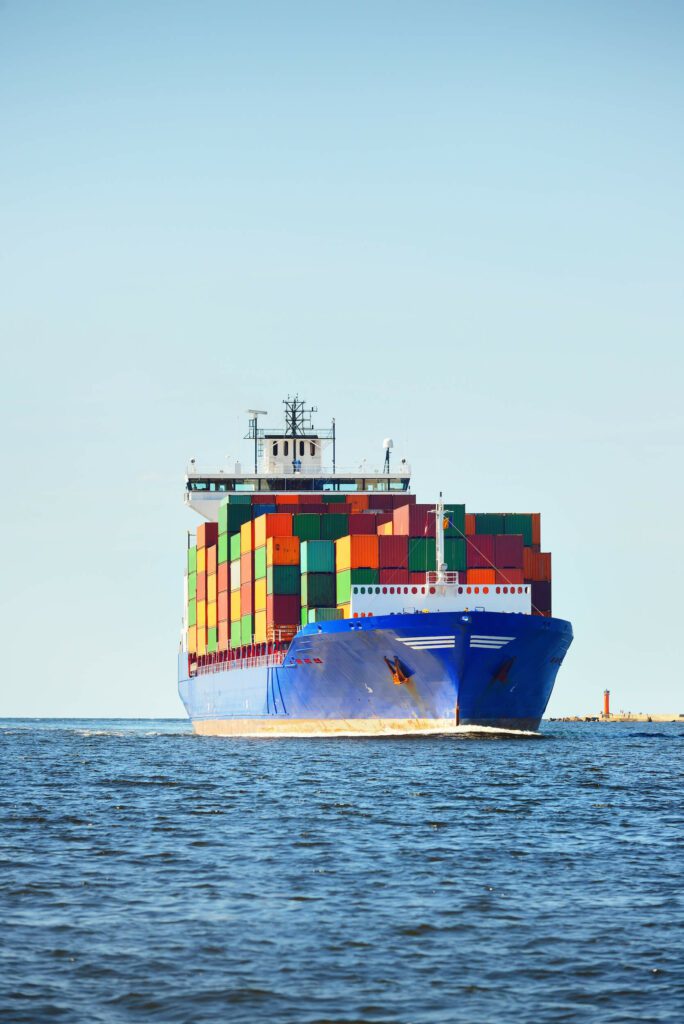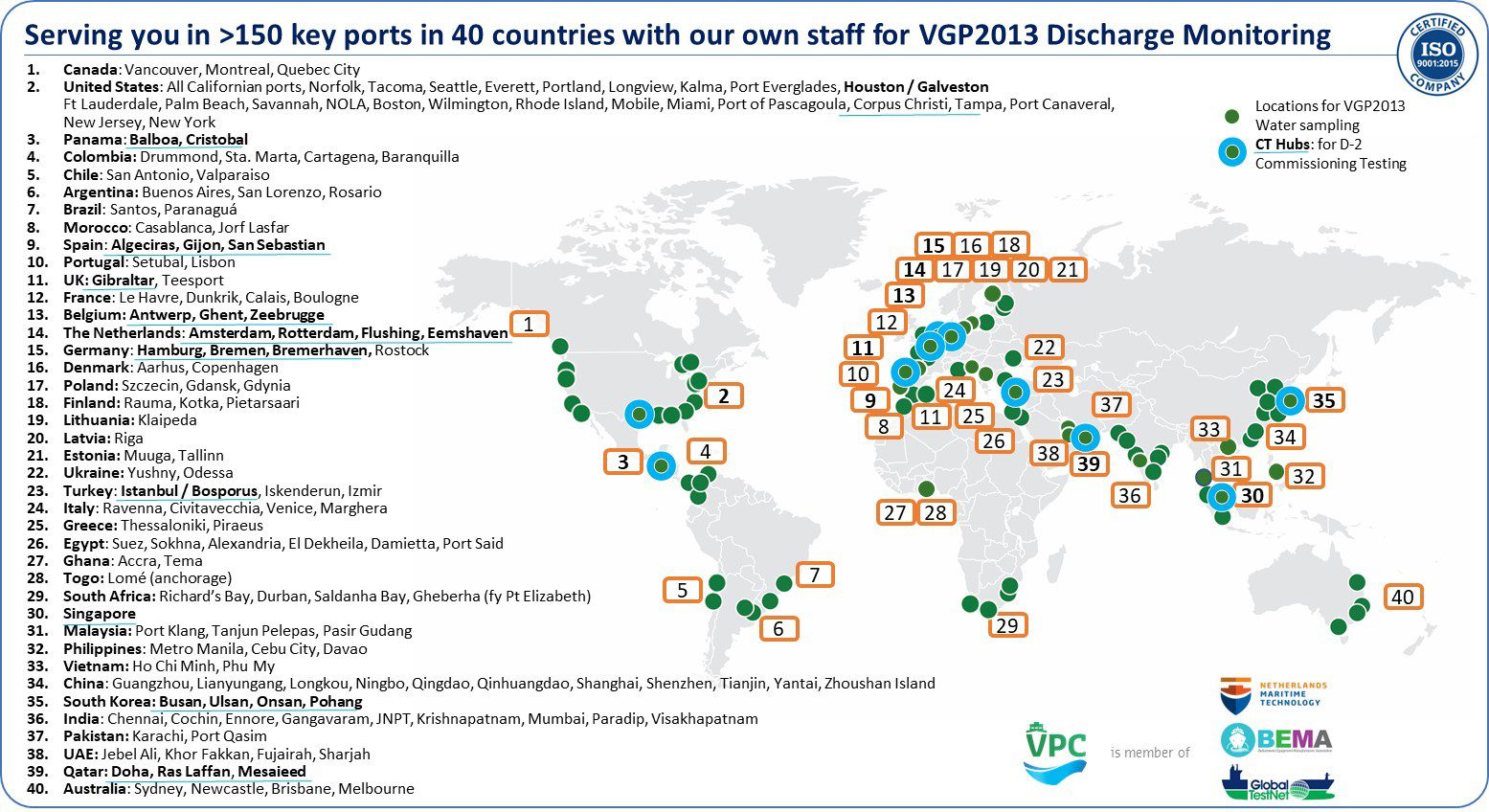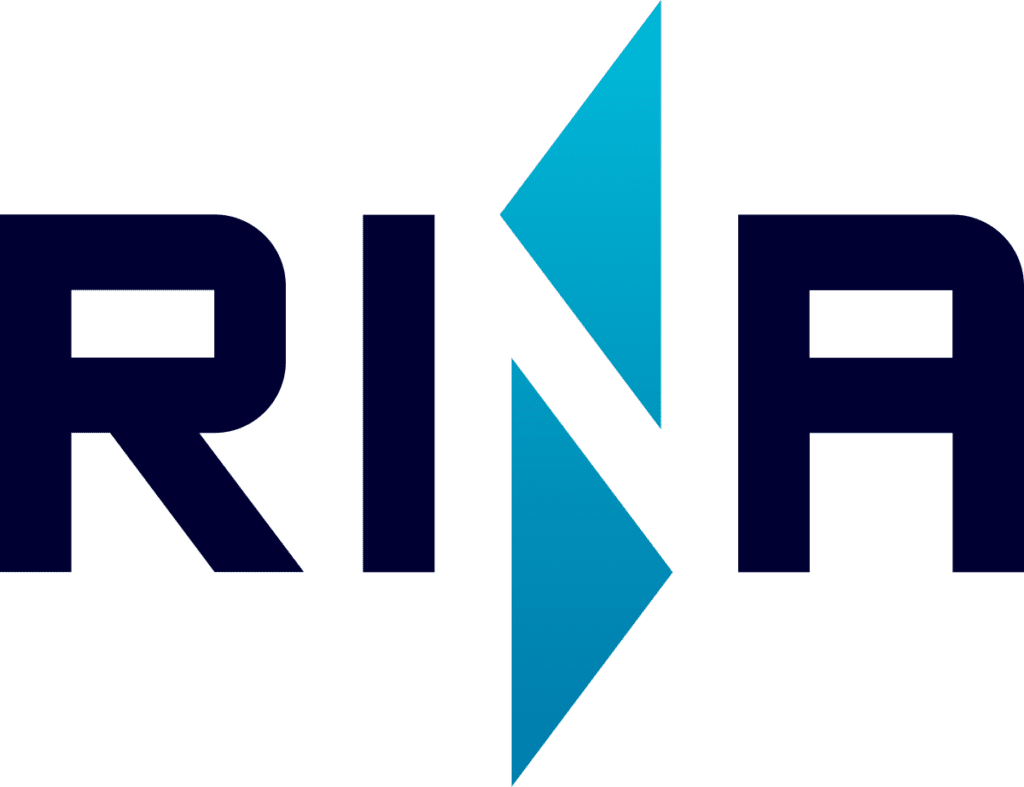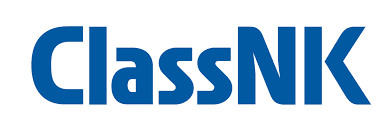Find an office
Vessel Performance Centre combines unmatched flexibility and state of the art operating procedures with our global Control Union network of offices and ISO17025 accredited laboratories. We offer our services near-globally, across 150+ locations along key ports and trade routes. Find out more.


Where to find us?
We offer VGP2013 Discharge Monitoring near-globally, across 150+ locations along key ports and trade routes in 38 countries.
For D-2 Commissioning Testing we deploy our teams globally from one of our 9 Hubs – without travel requirements and unmatched operational flexibility for slippages and delays:
- All ports in Belgium from Brussels, Antwerp, Ghent to Zeebrugge, serving Dunkirk (France) as well
- All ports in The Netherlands from Terneuzen, Rotterdam, Amsterdam, Den Helder and Eemshaven
- Hamburg, Bremen and Bremerhaven (in Germany) extending all the way to Szczecin, Gdynia and Gdansk (in Poland)
- Algeciras and Gibraltar, covering Barcelona, Tarragona, Gijon, Santander and Vigo, Viana do Castelo, Lisbon and Setubal (across the Iberian Peninsula for Spain and Portugal) also
- Singapore, with our local team also covering Batam (Indonesia), The Philippines and Malaysia
- Doha and Ras Laffan (in Qatar) for services in adjacent UAE locations as well
- Istanbul, Gebze, Tuzla and Yalova (in fact: all locations across the Marmara Sea in Turkey) with possibility to serve in Izmir, Mersin and Iskenderun too
- Houston, Galveston, Mobile, NOLA (United States) and wider Carribean locations
- Balboa and Cristobal (Panama) and other locations in the Carribean








